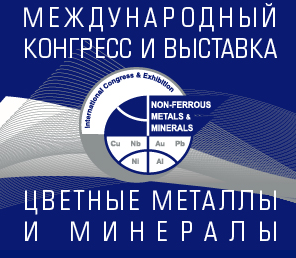ТЕРМОДИНАМИЧЕСКИЕ ХАРАКТЕРИСТИКИ РЕАКЦИЙ КИСЛОТНО-ОСНОВНОГО ВЗАИМОДЕЙСТВИЯ В ВОДНОМ РАСТВОРЕ ПИРИДОКСАЛЬ-5'-ФОСФАТА
Аннотация
В качестве объекта исследования нами был выбран 3-гидрокси-2-метил-5-[(фосфонокси)метил]-4-пиридинкарбоксальдегид пиридоксаль-5'-фосфат, PLP) - одно из важнейших биологически активных соединений. Прямым калориметрическим методом измерены тепловые эффекты взаимодействия раствора пиридоксаль-5' - фосфата с растворами азотной кислоты и гидроксида калия при 298,15 К и значениях ионной силы 0,5; 1,0 и 1,5 при фоновом электролите нитрате калия. Измерения проводились на калориметре с изотермической оболочкой и автоматической записью температурно-временной кривой, в реакционном сосуде объемом 60 см3 и при T = (293,15–308,15 К) ± 0,01 К и P = 100,5± 0,7 кПа. Относительная погрешность измерения для теплоты растворения стандартного вещества составляла-0,1-0,3%. Близкие значения констант диссоциации пиридоксаль-5'- фосфата не позволяют выделить такую область рН, где происходил бы только один из процессов ступенчатой диссоциации, в связи с чем измерялся суммарный тепловой эффект протонирования пиридоксаль-5'-фосфата. Расчет равновесного состава системы с учетом процессов ступенчатой диссоциации пиридоксаль-5'-фосфата и диссоциации воды проводился по программе КЕV. Тепловые эффекты ступенчатой диссоциации пиридоксаль-5'- фосфата рассчитаны с использованием универсальной программы HEAT. Поскольку тепловые эффекты разбавления были измерены в трех диапазонах концентраций KNO3: 0,4-0,5; 0,9-1,0; 1,4-1,5 моль/л, количество экспериментов в каждой серии было не менее четырех. Для расчета доверительного интервала среднего значения ΔH критерий Стьюдента взяли 0,95. Были найдены стандартные тепловые эффекты ступенчатой ионизации пиридоксаль-5'-фосфата путем экстраполяции экспериментально полученных количеств пиридоксаль-5' - фосфата на нулевую ионную силу раствора.
Литература
Mascolo E., Amoroso N., Saggio I., Merigliano C., Vernì F. Pyridoxine pyridoxamine 5′‐phosphate oxidase (Sgll/PNPO) is important for DNA integrity and glucose homeostasis maintenance in Drosophila. J. Cellular Phys-iol. 2020. V. 235. P. 504. DOI: 10.1002/jcp.28990.
Stevelink R., Pangilinan F., Jansen F.E., Brody L.C., Koeleman B.P.C. Assessing the genetic association between vitamin B6 metabolism and genetic generalized epilepsy. Molec. Genet. Metabol. Rep. 2019. V. 21. P. 100518. DOI: 10.1016/j.ymgmr.2019.100518.
Ramachandran Nair R., Parameswaran M. Prevalence of pyridoxine dependent seizures in south Indian children with early onset intractable epilepsy: A hospital based pro-spective study. Eur. J. Paediat. Neurol. 2005. V. 9. N 6. P. 409. DOI: 10.1016/j.ejpn.2005.08.005.
Gonzalez Rodrígueza J., Sevillab J.M., Pinedab T., Blázquez M. A Comparative Study of the Electrochemical Properties of Vitamin B6 Related Compounds at Physiological pH. Russ. J. Electrochem. 2011. V. 47. N 7. Р. 835. DOI: 10.1134 / S102319351107007X.
Wood W.A. The discovery, synthesis and role of pyridoxal phosphate: phase I of many phases in the Gunsalus odyssey. Biochem. Biophys. Res. Comm. 2003. V. 312. N 1. P. 185-189. DOI: 10.1016/j.bbrc.2003.09.245.
Jaeger B., Abeling N.G., Salomons G.S., Struys E.A., Simas-Mendes, M., Geukers, V.G., Poll-The B.T. Pyridoxine responsive epilepsy caused by a novel homozygous PNPO mutation. Molec. Genet. Metabol. Rep. 2016. V. 6. Р. 60-63. DOI: 10.1016/j.ymgmr.2016.01.004.
Gamov G.A., Zavalishin M.N., Usacheva T.R., Sharnin V.A. Effect of medium acidity on the thermodynamics and kinetics of the reaction of pyridoxal 5′-phosphate with isoniazid in an aqueous solution. Russ. J. Phys. Chem. A. 2017. V. 91. N 5. Р. 843. DOI: 10.1134/S0036024417050107.
Ware T.L., Pitt J., Freeman J. Pyridoxine responsiveness in novel mutations of the PNPO gene. Neurology. 2015. V. 84. N 3. P. 329. DOI: 10.1212/WNL.0000000000001147.
Marafie H., El-Ezaby M., Fareed S. Complexes of vitamin B6XX: 1 Equilibrium and mechanistic studies of the reaction of pyridoxal-5 -phosphate with pyridoxamine-5 -phosphate in the presence of copper(II). J. Inorg. Biochem. 1989. V. 37. Р. 7. DOI: 10.1016/0162-0134(89)80024-8.
Shanbhag V., Martell A. Schiff bases of pyridoxal 5'-phos-phate and 5'-deoxypyridoxal with phenylglycine de-rivatives and their metal complexes. Inorg. Chem. 1990. V. 29. Р.1023. DOI: 10.1021/ic00330a023.
Bentouhami E., Bouet G., Schwing M., Khan M. Potentiometric and UV-visible spectrophotometric studies of the stability of thorium(IV) complexes with (o-hydroxyphenyl) mono- and di-methylenephosphonic acids. J. Solution Chem. 2006. V. 35. Р. 889. DOI: 10.1007/s10953-006-9033-1.
Benghanem, F., Chafaa S., Bouet G.M., Khan M.A. Po-tentiometric studies of 4- mono(dihydroxyphosphonyl) methyl phenol and 2,6-bis(dihydroxyphosphonyl) methyl 4-me-thyl phenol complexes with cobalt(II), nickel(II), copper(II), zinc(II) and cadmium(II). Phosphorous. 2001. V. 170. Р. 159. DOI: 10.1080/10426500108040592.
Echevarria G., del Vardo M., Laynez J. Thermodynamics properties of pyridoxal 5 phosphate. J. Solution Chem. 1986. V. 15. Р. 151. DOI: 10.1007/BF00646286.
Asso L., Asso M., Mossoyan J., Benlian D. Étude des dérivés de la vitamine B6. J. Chim. Phys. 1978. V. 75. Р. 561. DOI: 10.1051/jcp/1978750561.
Bohmer V., Vogt W., Chafaa S., Meullemeestre J., Schwinig M.J., Vierling F. (o-Hydroxyphenyl)methylphosphonic acids: synthesis and potentiometric determinations of their pKa values. Helv. Chim. Acta. 1993. V. 76. P. 139. DOI: 10.1002/hlca.19930760108.
Lytkin A.I., Badelin V.G., Krutova O.N., Tyunina E.Yu., Krutov P.D. Thermochemistry of the acid-base interactions in aqueous solutions of isonicotinic and picolinic acids. Russ. J. Gen. Chem. 2019. V. 89. N 11. Р. 1719. DOI: 10.1134/S1070363219110124.
Zolotov J.L. Fundamentals of analytical chemistry. Meth-ods of chemical analysis. M.: Vyssh. shk. 2004. 503 p.
Lytkin A.I., Chernikov V.V., Krutova O.N., Skvortsov I. A. Standard enthalpies of formation L-lysine and the products of its dissociation in aqueous solutions. J. Therm. Anal. Cal. 2017. V. 130. N 1. P. 457-460. DOI: 10.1007/s10973-017-6134.
Korolev V.P., Antonova O.A., Smirnova N.L., Kustov A.V. Thermal properties of tetraalkylammonium bromides in several solvents. J. Therm. Anal. Calorim. 2010. V. 103. P. 401-407. DOI: 10.1007/s10973-009-0639-6.
Kustov A.V., Korolev V. P. Temperature dependence of the interaction between hydrophobic and hydrophilic solutes – a calorimetric study. Thermochim. Acta. 2005. V. 437. N 1-2. P. 190-195. DOI: 10.1016/j.tca.2005.05.012.
Kustov A.V., Smirnova N.L., Berezin D.B., Berezin M.B. Thermodynamics of solution of hemato- and deuteroporphyrins in N,N- dimethylformamide. J. Chem. Eng. Data. 2013. V. 58. N 9. P. 2502-2505. DOI: 10.1021/je400388j.
Kustov A.V., Bekeneva A.V., Saveliev V.I., Korolev V.P. Solvation of tetraethyl- and tetrabutylammonium bromides in aqueous acetone and aqueous hexamethyl phosphoric triamide mixtures in the water-rich region. J. Solution Chem. 2002.
V. 31. N 1. P. 71-80. DOI: 10.1023/A:1014809219103.
Kustov A.V., Smirnova N.L. Standard enthalpies and heat capacities of solution of urea and tetramethylurea in water. J. Chem. Eng. Data. 2010. V. 55. P. 3055-3058. DOI: 10.1021/je9010689.
Lytkin A.I., Barannikov V.P., Badelin V.G., Krutova O.N. Enthalpies of acid dissociation of L-carnosine in aqueous solution. J. Therm. Anal. Cal. 2019. Р. 1-7. DOI: 10.1007/s10973-019-08604-y.
Meshkov A.N., Gamov G.A. A free software for calculating the equilibrium composition and determining the equilibrium constants using UV-Vis and potentiometric data. Talanta. 2019. V. 198. P. 200-205. DOI: 10.1016/j.talanta.2019.01.107.



















